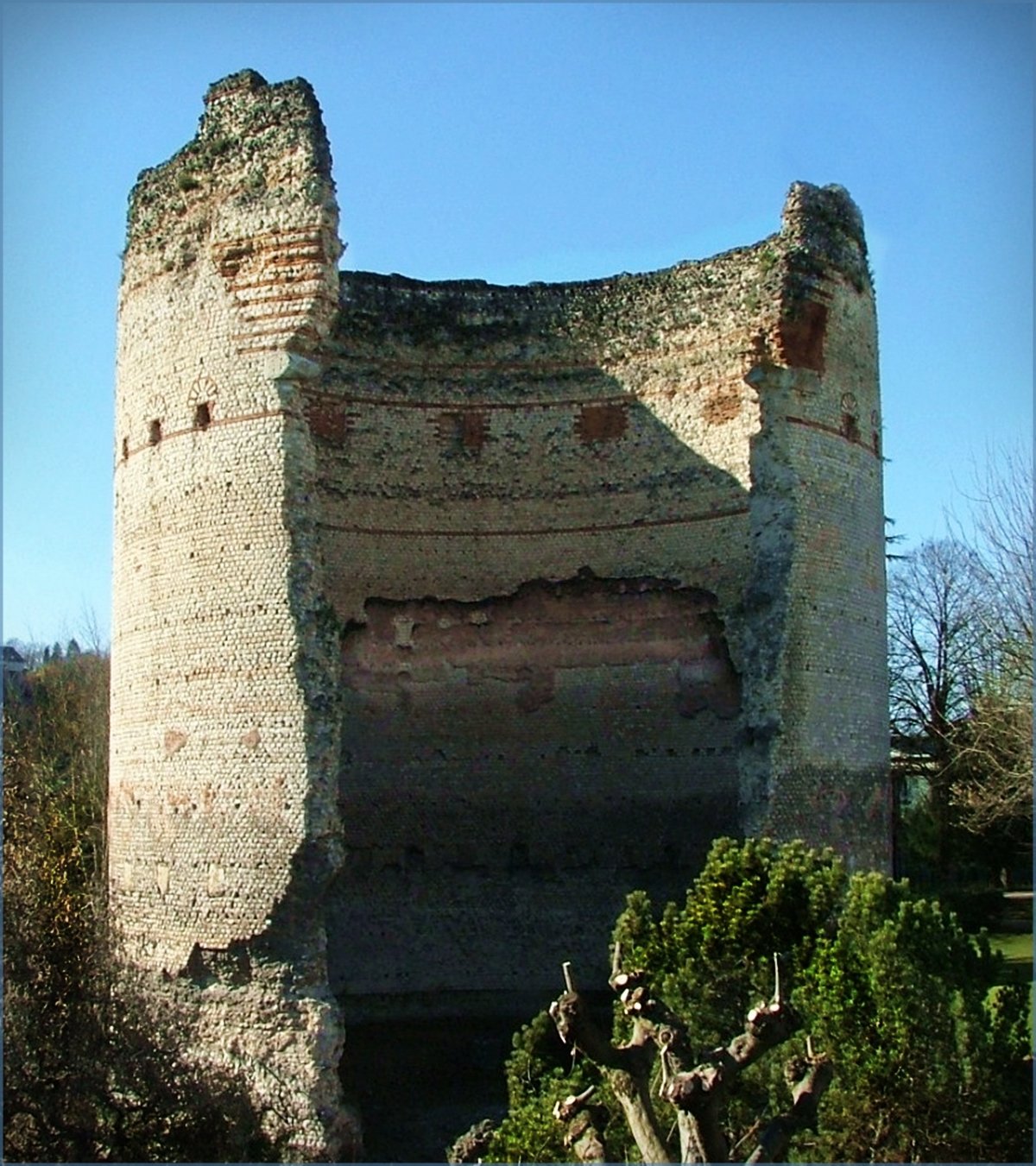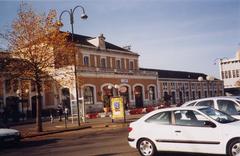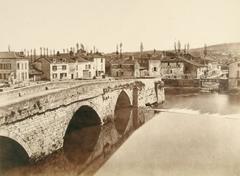
Visiting Temple de Vésone in Périgueux, France: Hours, Tickets, History, and Tips
Date: 31/07/2024
Introduction
Welcome to the Temple de Vésone, one of the most fascinating Gallo-Roman monuments located in Périgueux, France. This comprehensive guide will provide you with everything you need to know about visiting this historic site, from its rich historical background to practical visitor tips. The Temple de Vésone, also known as the Tower of Vésone, dates back to the 1st and 2nd centuries AD and was dedicated to the goddess Vesunna, the protective deity of the Petrocorii tribe. Its unique architectural style, which blends Celtic and Roman elements, offers a glimpse into the cultural fusion that occurred during the Romanization of the local population (Wikipedia). Over the years, numerous archaeological excavations have revealed significant artifacts and insights into the temple’s construction and historical context, making it a must-visit for history enthusiasts and cultural explorers alike (Guide du Périgord).
Table of Contents
- Introduction
- Historical Background
- Architectural Features
- Historical Context
- Modern Developments
- Visitor Information
- Unique Aspects and Events
- Conclusion
- FAQ
Historical Background
Origins and Construction
The Temple de Vésone, also known as the Tower of Vésone, is a significant Gallo-Roman monument located in Périgueux, in the Dordogne department of France. The temple was dedicated to the goddess Vesunna, the tutelary deity of the Petrocorii, a Celtic tribe that inhabited the region before the Roman conquest. The name Vesunna was later Latinized to Vesone, which also became the name of the city during the Roman era (Wikipedia).
Constructed between the 1st and 2nd centuries AD, the temple’s architecture is a blend of Celtic and Roman styles. The structure features a circular cella, typical of Celtic fanum, surrounded by a low ambulatory or gallery, and a columned pronaos, a characteristic of Roman temples. This architectural synthesis illustrates the cultural fusion and Romanization of the local population (Wikipedia).
Archaeological Discoveries
Excavations around the Tower of Vésone have provided significant insights into its construction and historical context. In 1894, the city of Périgueux acquired the garden surrounding the tower to establish an archaeological park. Excavations confirmed earlier discoveries by the Count of Taillefer, revealing a large block construction interrupting the circular wall on the opposite side from the breach. This block was connected to a vast set of buildings to the west of the temple (Wikipedia).
Further excavations from 1906 to 1909, led by Charles Durand, cleared the interior of the tower to the level of the old foundation. These excavations also uncovered the ambulatory of the temple, its galleries, and the peristyle through which the entrance to the courtyard of the temple was made (Wikipedia).
Dedication and Significance
The temple was dedicated to Vesunna, the protective goddess of the Petrocorii. Inscriptions preserved in the Museum of Art and Archeology of Périgord confirm this dedication. The Count of Taillefer initially speculated that the temple might have been dedicated to Isis, but subsequent findings clarified its dedication to Vesunna (Wikipedia).
Vesunna was likely a spring goddess, similar to the god Nemausus, who gave his name to the city of Nîmes. This association with water is reflected in the temple’s location and the city’s development around it. The temple’s construction and the city’s urban planning were designed to express Roman order and encourage the adoption of Roman lifestyles by the local population (Guide du Périgord).
Architectural Features
The Tower of Vésone stands as a circular construction with a diameter of nearly 20 meters and a height of 24 meters. The east side of the tower is breached by a gap nearly nine meters wide. This breach and other structural features have been subjects of extensive archaeological study, helping to reconstruct the history of its construction and highlight its ancient paving (France Voyage).
The temple’s architecture is a testament to the cultural fusion between the Celtic and Roman influences. The combination of a Celtic fanum with a Roman temple model illustrates the Romanization process and the persistence of local traditions. The temple’s design, with its circular cella and surrounding ambulatory, reflects the integration of these two cultural influences (Wikipedia).
Historical Context
The city of Périgueux, known as Vesunna during the Roman period, was a significant urban center in the province of Aquitaine. Emperor Augustus established the province around 16 BC, dividing it into 21 cities, including the City of the Petrucores (Civitas petrucoriorum). Vesunna occupied 82 hectares of a meander on the right bank of the Isle River. The city’s urban planning and architecture were designed to express Roman order and encourage the adoption of Roman lifestyles by the local population (Guide du Périgord).
By the 40s AD, Vesunna already had its forum, and the construction of the amphitheater was underway. The city remained a vast construction site until at least the mid-2nd century, with the construction of the great temple, now known as the Tower of Vésone, being a significant part of this development (Guide du Périgord).
Modern Developments
In 1833, the site, which was the property of Count Wlgrin de Taillefer, was ceded to the city of Périgueux. In 1846, the tower was added to the Monument historique registry, recognizing its historical and cultural significance. The construction of the Périgueux – Brive railway line in 1860 and the development of neighboring streets led to the destruction of the remains of the vast enclosure that protected the temple (Wikipedia).
Today, the Tower of Vésone is located within an archaeological garden and adjoins the Vesunna Gallo-Roman Museum, which is dedicated to the ancient past of Périgueux. The museum, designed by architect Jean Nouvel, features a large glass display that protects the historical monument and offers a thematic route explaining the city and public life, as well as the house and private life during the Gallo-Roman period (Guide du Périgord).
Visitor Information
Visiting Hours and Tickets
The Temple de Vésone and its surrounding archaeological park are open to the public year-round. Visiting hours are typically from 10 AM to 6 PM, but it’s advisable to check the official website for the most up-to-date information. Tickets can be purchased on-site or online, with discounts available for students, seniors, and groups.
Guided Tours and Accessibility
Guided tours are available for those who wish to gain deeper insights into the site’s history and significance. These tours can be booked in advance through the museum’s official website. The site is accessible to visitors with disabilities, and there are provisions such as ramps and accessible restrooms to ensure a comfortable visit.
Nearby Attractions
While visiting the Temple de Vésone, you can also explore other historical sites in Périgueux, such as the Vesunna Gallo-Roman Museum, the Périgueux Cathedral, and the medieval old town. These sites provide a comprehensive view of the city’s rich history and cultural heritage.
Travel Tips
Périgueux is well-connected by train and bus services, making it easily accessible from major cities like Bordeaux. If you’re driving, ample parking is available near the archaeological park. Consider visiting during weekdays to avoid crowds and enjoy a more serene experience.
Unique Aspects and Events
The Temple de Vésone often hosts special events and exhibitions that highlight its historical significance. Photography enthusiasts will find plenty of picturesque spots, especially around the circular cella and the landscaped park.
Conclusion
In summary, the Temple de Vésone is a remarkable testament to the Gallo-Roman heritage of Périgueux. Its historical significance, architectural features, and modern preservation efforts make it a must-visit site for anyone interested in ancient history and archaeology. Plan your visit today to explore this unique window into the past.
FAQ
What are the Temple de Vésone’s visiting hours?
The site is generally open from 10 AM to 6 PM. Please check the official website for the most current hours.
How much are tickets to the Temple de Vésone?
Ticket prices vary, with discounts available for students, seniors, and groups. Purchasing tickets online can sometimes offer additional savings.
Are guided tours available?
Yes, guided tours are available and can be booked in advance through the museum’s official website.
Is the Temple de Vésone accessible?
Yes, the site is accessible to visitors with disabilities, with features like ramps and accessible restrooms.
What nearby attractions can I visit?
You can visit the Vesunna Gallo-Roman Museum, the Périgueux Cathedral, and the medieval old town for a more comprehensive historical experience.


